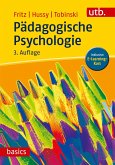Embodying advances in cognitive psychology since the publication of Bloom's taxonomy, this revision of that framework is designed to help teachers understand and implement standards-based curriculums as well as facilitate constructing and analyzing their own. A revision only in the sense that it builds on the original framework, it is a completely new manuscript in both text and organization. Its two-dimensional framework interrelates knowledge with the cognitive processes students use to gain and work with knowledge. Together, these define the goals, curriculum standards, and objectives students are expected to learn. The framework facilitates the exploration of curriculums from four perspectives-what is intended to be taught, how it is to be taught, how learning is to be assessed, and how well the intended aims, instruction and assessments are aligned for effective education. This "revisited" framework allows you to connect learning from all these perspectives.
Features + Benefits
Contains vignettes written by and for teachers that include a cross section of grade levels and subjects and that are annotated and analyzed to illustrate how to use this unique framework (6 vignettes-Ch. 7-13).
Provides teachers with a tool to help them make sense of goals, curriculum standards and objectives and to organize them so they are clearly understood and fairly easy to implement (Ch. 3).
Facilitates communication across subject matters and grade levels.
Describes four types of knowledge along the knowledge dimension (Ch. 4) and 6 categories that include 19 cognitive processes along the cognitive process dimension (Ch. 5).
Provides definitions, examples, and verbal descriptions, sample objectives/standards, sample assessment tasks/test items, sample instructional activities for the above - integrated throughout (Sections II and III).
Contains three additional chapters and an appendix unique to the complete edition. The first of these chapters covers a number of alternative frameworks that have appeared since the publication of the original book (Ch. 15).
Summarizes and reviews the empirical data that bears on the assumed cumulative hierarchy of the original Taxonomy and discusses the implication of these data in the second of these chapters (Ch. 16). The data that are summarized in Chapter 16's meta-analysis are shown in Appendix C.
Presents and analyzes some problems that remain to be solved in the third of them (Ch. 17).
Seeks to extend the approach of the original; use common language, be consistent with current psychological and educational trends, and provide realistic examples of the uses of the framework.
List of Tables and Figures.
Preface.
Foreword.
SECTION I: THE TAXONOMY, EDUCATIONAL OBJECTIVES AND STUDENT LEARNING.
1. Introduction.
2. The Structure, Specificity, and Problems of Objectives.
SECTION II: THE REVISED TAXONOMY STRUCTURE.
3. The Taxonomy Table.
4. The Knowledge Dimension.
5. The Cognitive Process Dimension.
SECTION III: THE TAXONOMY IN USE.
6. Using the Taxonomy Table.
7. Introduction to the Vignettes.
8. Nutrition Vignette.
9. Macbeth Vignette.
10. Addition Facts Vignette.
11. Parliamentary Acts Vignette.
12. Volcanoes? Here? Vignette.
13. Report Writing Vignette.
14. Addressing Long-standing Problems in Classroom Instruction.
APPENDICES.
Appendix A: Summary of the Changes from the Original Framework.
Appendix B: Condensed Version of the Original Taxonomy of Educational Objectives: Cognitive Domain.
References.
Credits.
Index.
Features + Benefits
Contains vignettes written by and for teachers that include a cross section of grade levels and subjects and that are annotated and analyzed to illustrate how to use this unique framework (6 vignettes-Ch. 7-13).
Provides teachers with a tool to help them make sense of goals, curriculum standards and objectives and to organize them so they are clearly understood and fairly easy to implement (Ch. 3).
Facilitates communication across subject matters and grade levels.
Describes four types of knowledge along the knowledge dimension (Ch. 4) and 6 categories that include 19 cognitive processes along the cognitive process dimension (Ch. 5).
Provides definitions, examples, and verbal descriptions, sample objectives/standards, sample assessment tasks/test items, sample instructional activities for the above - integrated throughout (Sections II and III).
Contains three additional chapters and an appendix unique to the complete edition. The first of these chapters covers a number of alternative frameworks that have appeared since the publication of the original book (Ch. 15).
Summarizes and reviews the empirical data that bears on the assumed cumulative hierarchy of the original Taxonomy and discusses the implication of these data in the second of these chapters (Ch. 16). The data that are summarized in Chapter 16's meta-analysis are shown in Appendix C.
Presents and analyzes some problems that remain to be solved in the third of them (Ch. 17).
Seeks to extend the approach of the original; use common language, be consistent with current psychological and educational trends, and provide realistic examples of the uses of the framework.
List of Tables and Figures.
Preface.
Foreword.
SECTION I: THE TAXONOMY, EDUCATIONAL OBJECTIVES AND STUDENT LEARNING.
1. Introduction.
2. The Structure, Specificity, and Problems of Objectives.
SECTION II: THE REVISED TAXONOMY STRUCTURE.
3. The Taxonomy Table.
4. The Knowledge Dimension.
5. The Cognitive Process Dimension.
SECTION III: THE TAXONOMY IN USE.
6. Using the Taxonomy Table.
7. Introduction to the Vignettes.
8. Nutrition Vignette.
9. Macbeth Vignette.
10. Addition Facts Vignette.
11. Parliamentary Acts Vignette.
12. Volcanoes? Here? Vignette.
13. Report Writing Vignette.
14. Addressing Long-standing Problems in Classroom Instruction.
APPENDICES.
Appendix A: Summary of the Changes from the Original Framework.
Appendix B: Condensed Version of the Original Taxonomy of Educational Objectives: Cognitive Domain.
References.
Credits.
Index.








